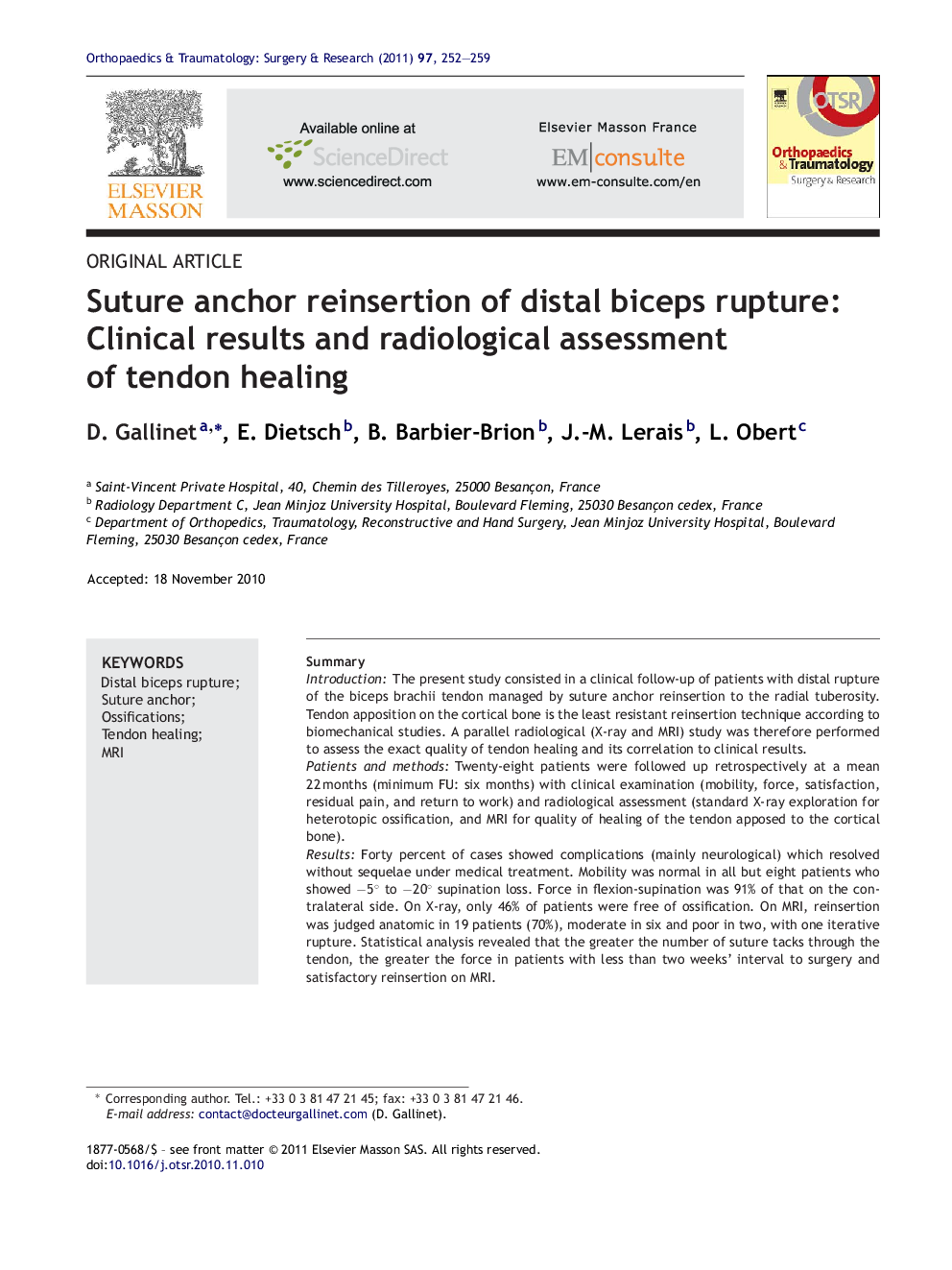| کد مقاله | کد نشریه | سال انتشار | مقاله انگلیسی | نسخه تمام متن |
|---|---|---|---|---|
| 4082262 | 1267630 | 2011 | 8 صفحه PDF | دانلود رایگان |

SummaryIntroductionThe present study consisted in a clinical follow-up of patients with distal rupture of the biceps brachii tendon managed by suture anchor reinsertion to the radial tuberosity. Tendon apposition on the cortical bone is the least resistant reinsertion technique according to biomechanical studies. A parallel radiological (X-ray and MRI) study was therefore performed to assess the exact quality of tendon healing and its correlation to clinical results.Patients and methodsTwenty-eight patients were followed up retrospectively at a mean 22 months (minimum FU: six months) with clinical examination (mobility, force, satisfaction, residual pain, and return to work) and radiological assessment (standard X-ray exploration for heterotopic ossification, and MRI for quality of healing of the tendon apposed to the cortical bone).ResultsForty percent of cases showed complications (mainly neurological) which resolved without sequelae under medical treatment. Mobility was normal in all but eight patients who showed −5° to −20° supination loss. Force in flexion-supination was 91% of that on the contralateral side. On X-ray, only 46% of patients were free of ossification. On MRI, reinsertion was judged anatomic in 19 patients (70%), moderate in six and poor in two, with one iterative rupture. Statistical analysis revealed that the greater the number of suture tacks through the tendon, the greater the force in patients with less than two weeks’ interval to surgery and satisfactory reinsertion on MRI.DiscussionMany reinsertion techniques have been reported, giving clinical results similar to one another and to the present findings. The complications rate, in contrast, varies according to technique and surgical approach. Radiologically, 70% of reinsertions were satisfactory: healing with the tendon apposed on the cortical bone is thus a reliable technique. Heterotopic ossification is considered benign in the literature. The present radiological study refined this notion by identifying three types of ossification: pure asymptomatic intratendon ossification; pure asymptomatic tuberosity ossification without impact on healing on the radial tuberosity; and tuberosity ossification with associated boney metaplasia of the terminal part of the reinserted tendon, impairing healing and leading to less satisfactory clinical results. To ensure anatomic healing of the distal biceps tendon, we recommend less than two weeks’ interval to surgery and at least two suture tacks to obtain good apposition on the radial tuberosity.Level of evidence Level IVRetrospective therapeutic study.
Journal: Orthopaedics & Traumatology: Surgery & Research - Volume 97, Issue 3, May 2011, Pages 252–259